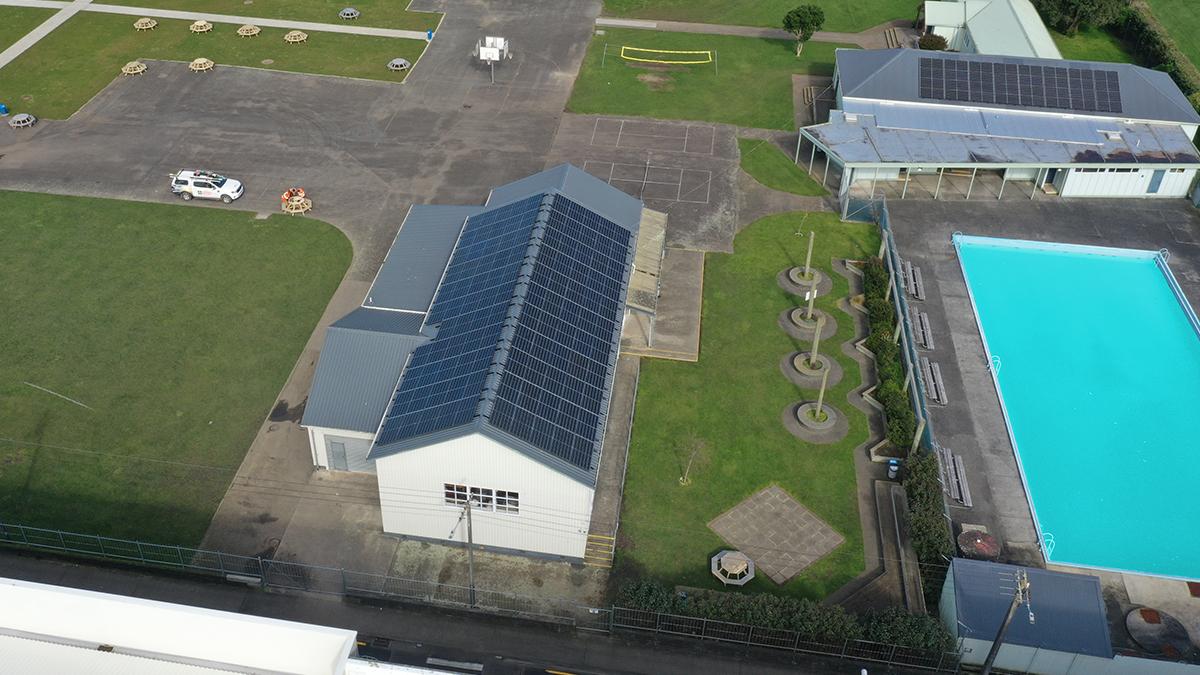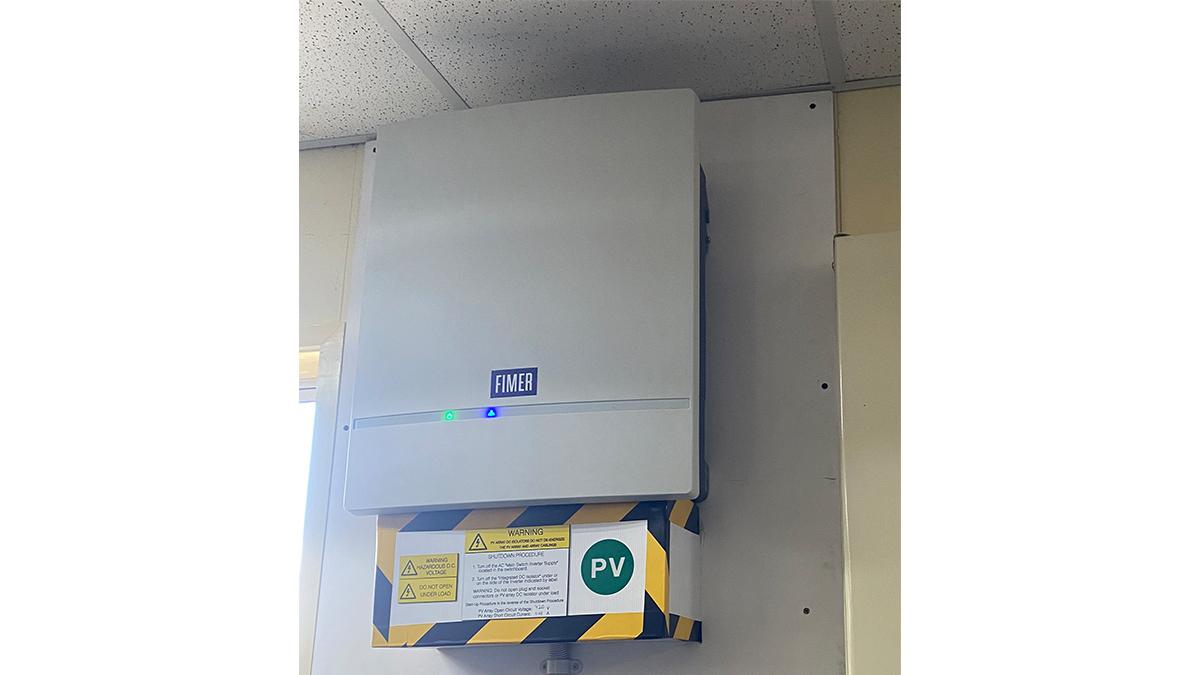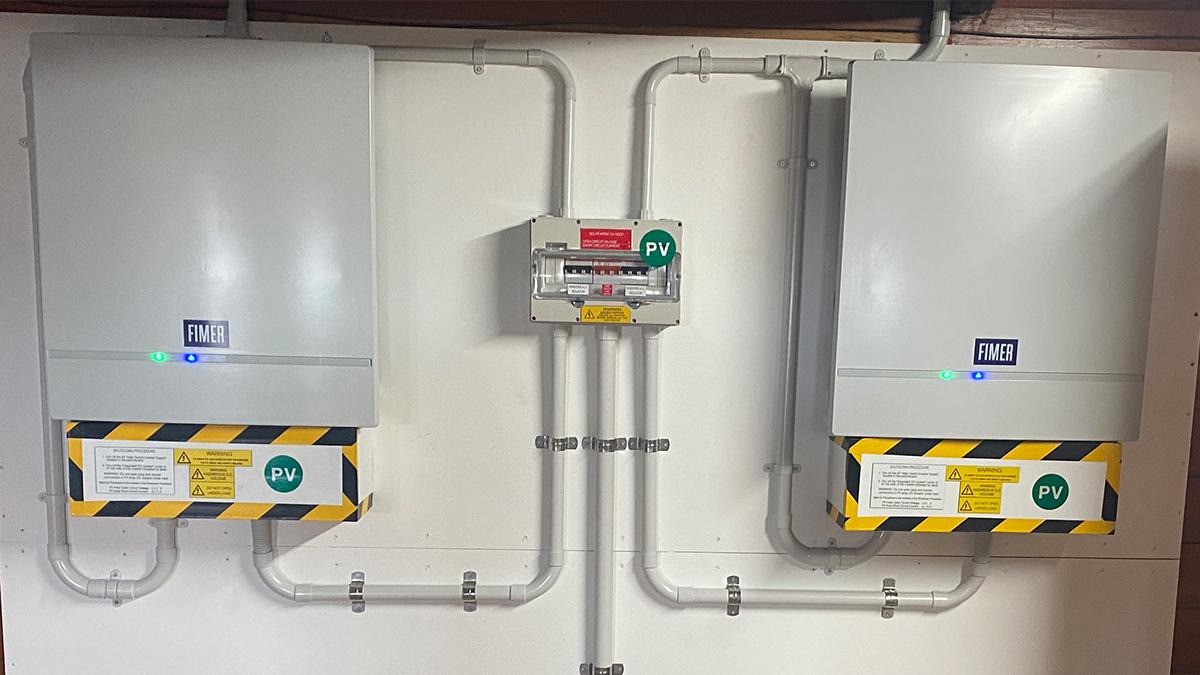One of the first PVS-10/33 installations in New Zealand was completed in June 2022 as part of a 60 kW solar system for the Hāwera High School to help lower its carbon emissions and energy costs.
Hāwera High School is located in the Taranaki region of New Zealand’s North Island (approximately 420 km south of Auckland). Currently, the school educates over 700 children from Year 9 to Year 13. From January 2023, the school will close along with Hāwera Intermediate and a new school, ‘Te PaePae o Aotea’, will open at the Hāwera High School site and will see over 1,000 children attend school for their Year 7 - 13 schooling.
With the support of government covid response funding, Hāwera High School saw an opportunity to upgrade its swimming pool facilities and convert its existing pool into a heated pool. This change will allow students to swim and participate in water education for longer periods of the school year instead of during only the summer months.
However, having a heated pool would increase their energy costs dramatically. The opportunity to install solar at the school will help offset this increase and power 35% of their total energy requirements, enabling heating to become possible.
They engaged Egmont Solar, a local solar company where several past students work, to design and install the 60 kW solar system for the school.
With limited roof space available, the team designed the solution to be able to capture the sun all day across three arrays over two buildings. Utilising 141 x 425 W Canadian Solar panels, the panels were mounted over three arrays: a 15 kW north facing array, a 20 kW west facing array, and a 20kW east facing array.
The system is powered by 2 x FIMER PVS-20 three-phase inverters and 1 x FIMER PVS-15 three-phase inverter for a total system size of 59.9 kW.
Brad Lynch from Egmont Solar selected FIMER’s newest three-phase range saying, “Delivering quality solutions to our customers is a priority for us. FIMER was selected for this project for its reliability, simplicity to install, maximised efficiency and ability to fit perfectly into the required voltage ranges.”
FIMER’s PVS-10/33 is an Italian-made three-phase string inverter and is the newest three-phase solution to hit the market. The range comes in six power sizes, including 10kW, 12.5kW, 15kW, 20kW, 30kW and 33kW and joins FIMER’s comprehensive commercial and industrial portfolio.
The solution offers both the installer and end-user reliability, performance and flexibility. The inverters are a fuseless design, with the PVS-20 inverter equipped with 4 MPPTs and the PVS-15 equipped with 2 MPPTs.
Brad continued, “With FIMER’s string inverters made in Italy, coupled with their strong support, my business is confident in offering their solutions to my customers. I’m proud to be one of the first New Zealand installers to install these inverters. The PVS-15 and PVS-20 inverters were extremely easy to install and have been performing extremely well since commissioning, beating our estimates.”
The school’s solar system is connected to FIMER’s Aurora Vision Monitoring Platform, enabling the system to be monitored and controlled remotely. FIMER’s Kiosk View is also available for the site and is a public website that can enable the school to share with its students, so they can track the benefits and performance of having solar installed at their school.
In the first 20 days after commissioning, the system produced over 2 MWh in the middle of winter, far exceeding the modelling. Annually, the 60 kW system will generate approximately 36 MWh of energy, reducing over 6.2 Tonnes of CO2.
Gary Wallis, the school’s Board of Trustees Chairperson, said, “Installing solar has provided us with a unique opportunity to educate the students on Renewable Energy, including both the environmental and economic impacts associated with it. We see solar as a great investment for a school as 90% of a school’s energy demand is during the day, and the school will use 100% of the energy generated by our new solar system. The school holidays are also an opportunity to export the energy produced to generate even more savings for the school.”




Watch the video case study
